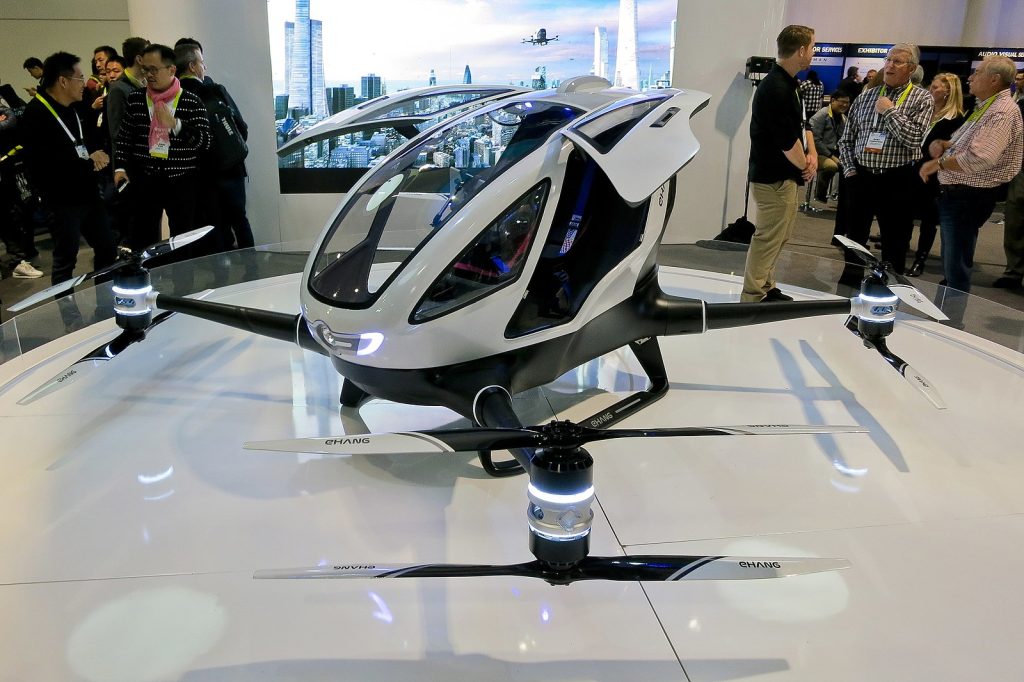On May 6th, EHang, a pioneering Chinese company in the eVTOL domain, achieved a remarkable milestone – the first overseas maiden flight of a 2-ton eVTOL aircraft. In the skies above the United Arab Emirates, their cutting-edge eVTOL took to the air, marking a significant step forward in the realm of advanced air mobility.

UAE City.
The 41-minute flight, covering a distance of 123 kilometers (76 miles), was more than just a technological feat. It was a testament to the boundless potential of eVTOL technology and its ability to revolutionize transportation across diverse environments. Even after its extended journey, the eVTOL still had an impressive 44% of its battery capacity remaining, showcasing the efficiency and range of EHang’s innovative designs.

EHang eVTOL demonstration. EHang Holdings Limited credit.
But this flight was about more than just numbers and statistics. It was a symbolic gesture, with the aircraft’s flight path meticulously planned to trace the letters “UAE” – a tribute to the nation that hosted this groundbreaking event. This artistic touch highlights the visionary spirit behind EHang’s endeavors, where innovation and creativity go hand in hand.
“Today’s flight is a significant milestone in our journey to bring eVTOL technology to the world,” said Hu Huazhi, EHang’s CEO. “By successfully executing this long-distance flight in the challenging desert environment of the UAE, we’ve proven the reliability and adaptability of our aircraft in diverse operating conditions.”
The implications of this achievement extend far beyond the realm of aerospace engineering. eVTOL technology promises to revolutionize various sectors, from emergency response and medical transportation to logistics and urban air tourism. Imagine a future where an air ambulance can swiftly navigate congested streets, transporting patients to healthcare facilities in a fraction of the time. Or envision a world where time-sensitive goods are delivered effortlessly to your doorstep via silent, electric-powered drones.
While the concept of urban air mobility may seem like a scene from science fiction, companies like EHang are actively collaborating with cities and regulatory bodies worldwide to make this vision a reality. NASA, for instance, is working closely with industry partners to develop a comprehensive ecosystem for urban air mobility, addressing critical aspects such as air traffic management and ground infrastructure.
“The successful integration of eVTOL technology into our cities requires a collaborative effort between innovators, city planners, and regulatory bodies,” explains a senior aerospace engineer at NASA. “We’re working tirelessly to establish a secure and efficient aerial transit system that seamlessly coexists with traditional aviation while prioritizing public safety.”
As with any transformative technology, challenges remain – public acceptance, regulatory frameworks, and infrastructure development are just a few hurdles to overcome. However, the potential benefits are vast – reduced emissions, alleviated traffic congestion, and a more connected, efficient urban landscape.
EHang’s landmark flight in the UAE is a testament to the global interest and potential of eVTOL technology. The company has already established partnerships with organizations in the region, such as Emirates Falcons Aviation, and Multi Level Group (MLG), paving the way for the widespread adoption of this groundbreaking innovation.
“This is more than just a new mode of transportation,” Hu Huazhi concludes. “It’s a revolution that will reshape how we experience and interact with urban environments. The sky is no longer the limit – it’s the next frontier for mobility and human progress.”
Embrace the vision, for the era of urban air mobility is on the horizon, poised to redefine the very concept of the modern metropolis. The future takes flight, and the skies await – a boundless realm where innovation soars beyond borders, transcending the limitations of today and ushering in a new age of sustainable, efficient, and extraordinary transportation.
Leave a Reply